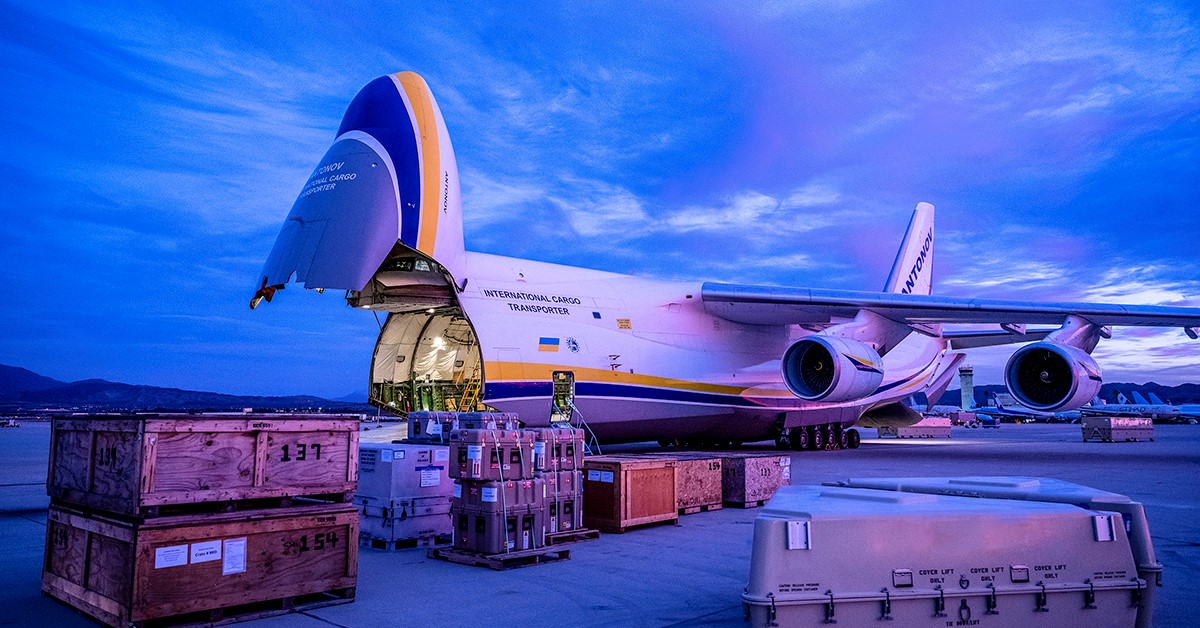No products in the cart.
Executive Q&A with Michael Burrows, Executive Director, SBD International Airport

Air Cargo World (ACW): Cargo operations at San Bernardino International Airport (SBD) have grown extremely quickly over the past couple of years. How has the leadership at your airport worked in cooperation with your major clients — UPS, FedEx, and Amazon — as they scale up their operations there?
SBD International Airport (SBD): At SBD, we really pride ourselves on the strength of our partnerships and we take those very, very seriously. Our entire SBD team is encouraged and challenged to treat each transaction as a partnership or a continuation of one. As you noted, UPS took a chance on us back in 2017 after we had been courting them for many, many years. And thankfully, we have been flying together ever since. FedEx, fortunately, followed in 2018, and then quickly proceeded to stand up a brand-new FedEx Ground facility down the street. That really complements the work that we have been doing all these years.
From our AllianceCalifornia business park — it’s a partnership with our Hillwood partners out of Dallas — we’re very fortunate to have such incredible companies working with us every day. Amazon Air is simply the next chapter in the AllianceCalifornia SBD story, but it’s one we have been planning and preparing for literally for over 20 years.
ACW: Your major customers are heavily involved in the e-commerce and express areas of air cargo, and those areas have substantial growth during the pandemic. What impact has that had on cargo at SBD?
SBD: SBD was ready and able to support additional traffic and services during the pandemic. In answering that global and national call to do all we can as airports to support our aviation community in the supply chain with AllianceCalifornia, our business park, we have grown up with e-commerce from its emergence in the industry. In 2012, our business park was home to the very first Amazon.com fulfillment center ever built in California. That has allowed our team to learn from the industry as it grew.
But amidst the pandemic, we opened our taxiways and ramp to support Delta Airlines and our MROs as they restructured their fleet and network. We increased staffing at our FBO to provide more flexibility and service around the clock. And as a result, in part, UPS and FedEx maintained consistent scheduled service while adding additional capacities. UPS began to upgauge its aircraft in and out of SPD — what were once 757s and 767s became MD-11s and now, 747s. In addition to that, internationally, we supported multiple international cargo charters for PPE and other critical equipment.
Air cargo is definitely on the rise. It was headed that way for us before the pandemic, but it seemed like the pandemic and the demand for regional alternatives really highlighted our ability to be nimble, yet supportive and focused, but flexible at the same time, and our team has just done an excellent job.
ACW: Many air cargo providers and airports have accelerated their adoption of new technologies or processes during the pandemic. Has the pandemic sped up any plans at SBD?
SBD: As to COVID, we at SBD took a more practical and pragmatic approach to protect our customers and our team. With a right-sized airport, we adopted a team-focused protocol across our

business lines. And what I mean by that is, is implementing site-specific temperature checkpoints and safety protocols, sanitation procedures specific to that industry segment, and we really tried to involve the team in the solutions. Our security checkpoints and access controls were consolidated so that we can ensure consistent and safe service. Because we do not currently have scheduled commercial passenger service, our focus was mostly centered on the FBO, cargo terminals and fuel farm, and it actually made compliance more seamless and less disruptive.
In the middle of the pandemic, we were able to stand up a brand new UAS [unmanned aircraft systems] center on the airport. This UAS center at SBD has really been an exciting surprise for us all. Closely coordinating with FAA since July of this year, we’ve been training and certifying UAS pilots right here at a Part 139 airport in a metropolitan area. It’s centered on certification with best practices to ensure safe and proper drone flight standards. The FAA has been working on this across the country, but we are also testing and exhibiting the latest next-generation UAS technology and products, focused on U.S.-manufactured systems.
We have been able to host global companies such as Esri and HiTech, and we’ve now Added Caltech and JPL to that list. We recently executed a memorandum of understanding with these tech leaders here in Southern California. As our website shows, this is the future of flight, not just for airports but for airport systems, and our fully UAS-certified airport operations team now knows it firsthand. Post-pandemic applications for UAS really have implications that we have not yet seen — the applications appear to be endless at this point. What we’re really looking toward is the ability to use UAS so that our airport team can do airfield and wildlife inspections and reports that way.
ACW: Looking into the future, what is your outlook on the continued expansion of the carriers operating at SBD?
SBD: We continue to invest in our infrastructure at SBD. We’re working on expanding our fuel farm, which has good capacity. But to stay ahead of it, we want to make sure we’ve got more, and that we have the ability to supplement. We are opening new cargo access-only control points on the ground side. We did that for FedEx and UPS; we built a dedicated cargo-only entrance to the airport, reducing wait times and increasing throughput and efficiencies, but also being good neighbors to our surrounding communities.
More international air cargo is a steady conversation for our executive and marketing team, but scheduled passenger service is still in our business plan to this day, even during COVID — so business jets, corporate traffic, MROs and the like. We work every day to ensure consistent cost-effective and reliable service to all our customers, no matter how big or how small.

















